We outline some of the most effective techniques for integrating sampled vocals with your track.
Over the last couple of decades, samplers and digital editing techniques have blurred the lines between vocal tracks and instrumentals. Dance music producers have explored numerous ways to create vocal-led tracks without ever going near a microphone. They’ve even, in the case of producers like Todd Edwards and MK, developed ways to use vocal samples as instruments in their own right. In this walkthrough we’ll look at some of the best ways to cut and transpose vocals in your DAW in order to make them fit into your tracks. So grab some acapellas and let’s get started.
Beat It
For the sake of immediacy let’s assume that we already have the bare bones of a track… (Click the images to enlarge.)
Here’s how our backing track sounds:
Audio PlayerThis track has a tempo of 125bpm. We also have a vocal we want to use, but unfortunately it was originally recorded for an entirely different track at 80bpm…
Audio PlayerThe quickest approach is to dive in and completely disregard the original tempo. Just slice your acapella audio into a series of smaller sections (even down to the syllable level if you have the patience) and import the slices into your software sampler.
Many DAWs make the job easy, and even almost completely automatic. In Logic, for instance, we can use the ‘Convert Regions to New Sampler Track’ function…
This takes a sliced audio clip and maps the slices to successive keys in the EXS-24 sampler…
Cubase has the ability to drag-and-drop slices into its Groove Agent ONE sampler for similar results. The slices are mapped to pads, MPC-style…
Once the sampler is ready, just record or draw a sequence which plays back the slices in an interesting way…
Here’s how the sliced samples sound when played back:
Audio PlayerThe big issue here is that the key of the vocals doesn’t necessarily match the key of the new track. Therefore, some retuning might be necessary…
And here’s how it sounds once we’ve retuned the samples:
Audio PlayerHowever, adjusting the pitch of the samples will also change their timing. This isn’t a problem if you’re using very small slices, but it can be annoying with longer phrases. The alternative is to transpose your musical parts to fit the vocals.
Here we’ve left the samples at their original pitch and transposed the rest of our MIDI elements:
Audio PlayerNext, let’s take a look at some alternative approaches…
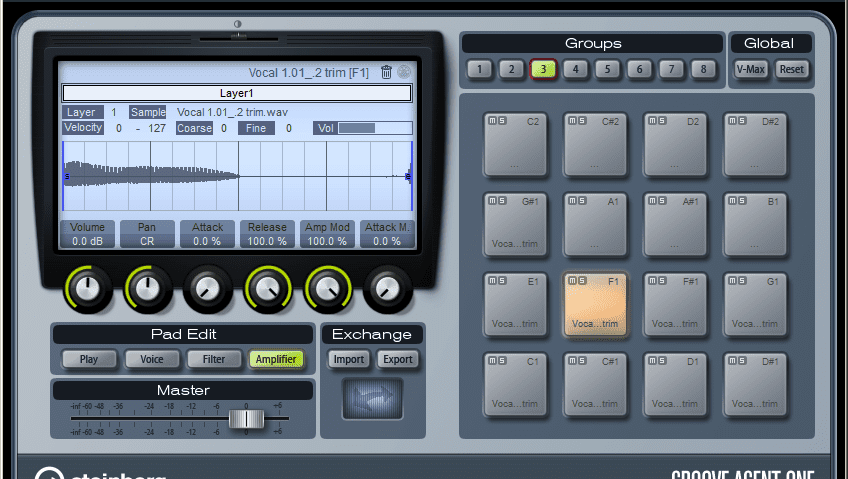
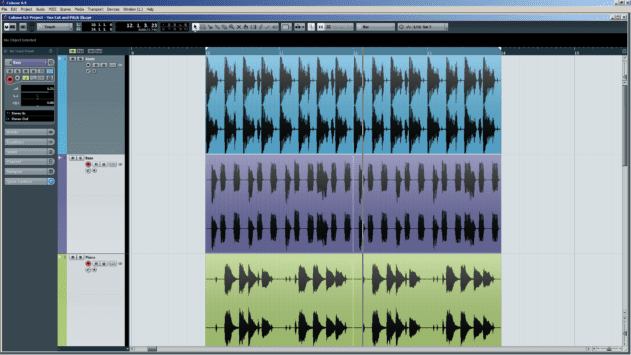
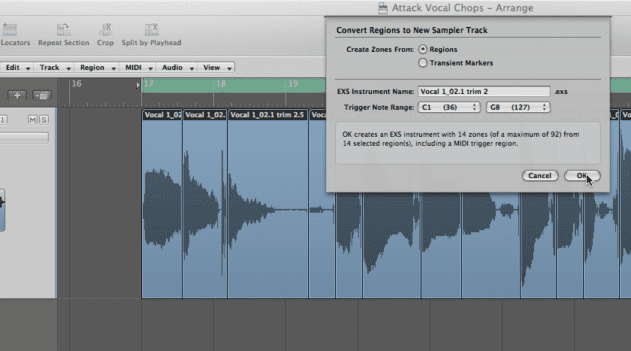
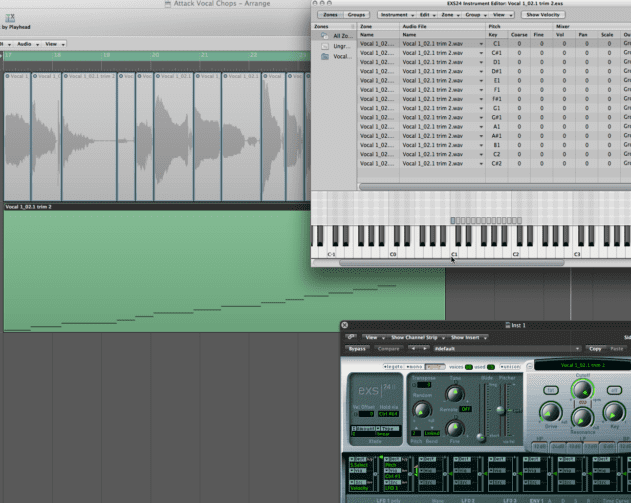
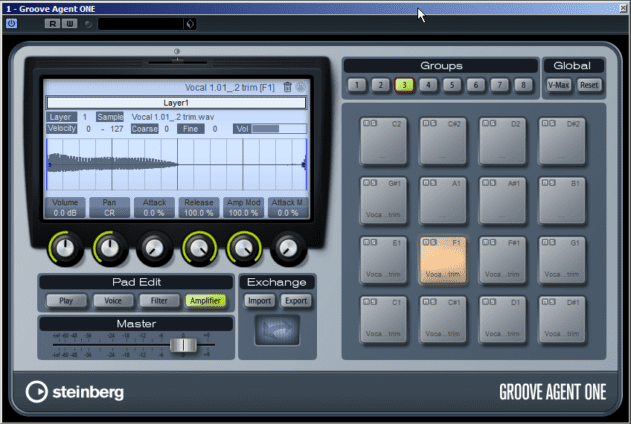
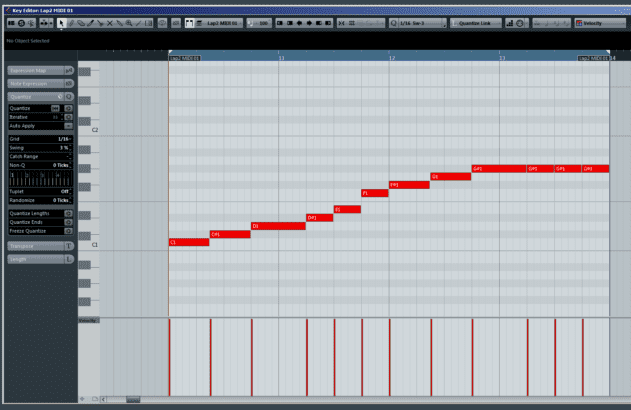
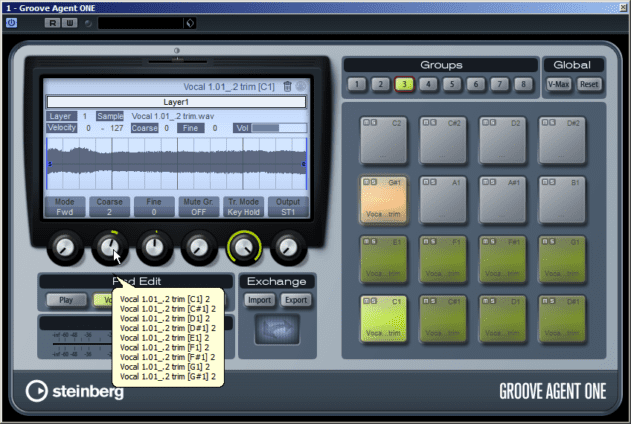
05.18 PM
Seems to be a bit of a jump here. You got from a vocal with a backing track and drums to what basically sounds like an acapella. How did you manage that?
Cheers
A
05.19 PM
Correction: That should be “go” not “got”.
05.40 PM
Hi Ablore. Sorry for the confusion – we’re not trying to show how to extract an acapella here. The demo clip is just there to show the source of the vocal. We’ll come back to extracting acapellas in the future, but the easiest approach is always to start with an isolated vocal.
02.11 AM
I find that slicing up vocals and throwing little snippets in on beat is so easy. It’s the tuning and all that stuff that’s hard. Getting something “good” sounding out of it. I guess that’s where the artists finesse comes in.
01.14 AM
I love this effect. Big question: how would I pull this off in Ableton??
04.30 AM
Hey Attack, thanks for this interesting write up. My question to you is, for re-pitching, would you always do it before sampling? (for the pitched down vox) Sometimes I load a a phrase across many keys in the ESX 24 (with pitch on) and see what works. Does it make any sense doing it this way as well?
08.49 AM
Whichever method you find easier is fine as long as it gets you the sound you’re looking for – we’re not keen on imposing rules on music production! The reason we’ve pitch shifted before slicing here is that it maintains the tempo of the original material. If you slice first then pitch down an octave in EXS-24, for example, your slices will play at half speed. In some cases that can work, but it’s not always the sound you’re looking for.
12.18 PM
Hi guys – you mention above you’ll be addressing how to extract acapellas. Would still love to see an Attack tutorial on this if it could maybe be added to the longlist of Technique features. 🙂
01.57 AM
Definitely interested in an extracting acapellas walkthrough, find it’s easier with Hip Hop and Soul music at the same tempo, for house it can be tricky when you’re dealing with a backing track, for me there’s a bit of luck involved with what works and doesn’t.
Solid techniques would be more than welcome.
Cheers
01.09 PM
Hey!
Nice post, is there any way to get the acapella you used, really like the sound of it! 🙂
12.08 AM
https://soundcloud.com/kidmethuselah/future-beat-it
Like dis?
05.58 PM
nice …could you do it in ableton too